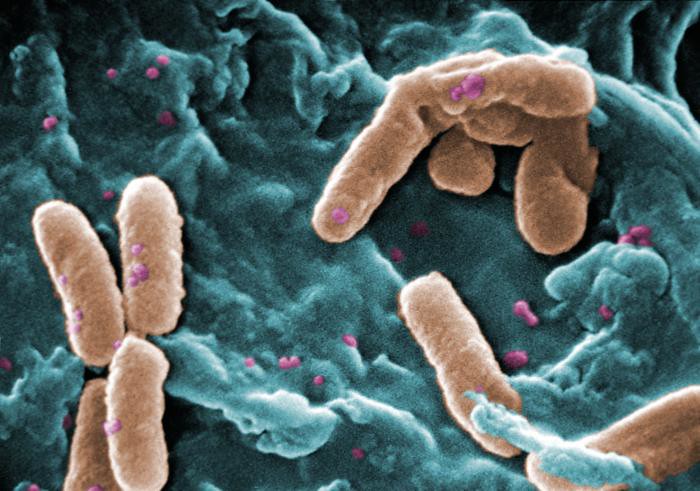The answer is yes! Trees, like any other living beings on this planet consist of cells. When these behave weirdly and start growing abnormally, this is considered as cancer, a disease which can thus effect not only humans and animals, but also plants. In case of trees it happens quite frequently and is easy to observe since the continuous growth of the cancer cells means that the tree will grow a big tumour visible with the naked eye. The responsible for the disease on the other hand is way to small to see it without using a microscope. It is a rod-shaped bacterium known as Agrobacterium tumefaciens (the updated scientific name is Rhizobium radiobacter) which invades the plant to make it produce nutrients for it.

https://static4.libertatea.ro/wp-content/uploads/2016/05/Pseudomonas.jpg
In order to do so, the bacterium has to get into the plant, for example through a wound, and attach to the cells. Once this happened, it transfers some DNA, the so-called T-DNA, into the plant cell which is incorporated in the plant genome. The genes encoded on the transferred DNA are expressed by the plant, so that the hormone auxin is produced leading to the continued growth of the plant cells and thus to the formation of the tumour. In addition, the T-DNA encodes for enzymes which cause the plant to produce a special form of amino acids, opines, which are an important nutrient for the bacterium. While the bacterium thus profits of its relation with the plant, the plant as host only suffers from the invasion by the bacterium. Since the bacterium can infect different trees, but also other crops such as vine or sugar beets, it is considered as a pathogen. However, it can also be useful as some biologists found out.
As the bacterium transfers DNA into plant cells, where it is integrated into the genome, it turned out to be a tool for genetical modification, not only for plants but also for filamentous fungi such as Aspergillus niger which is no longer only the black mold on rotten fruits and vegetables, but also an important producer of citric acid thanks to gen technology.
Sources:
https://en.wikipedia.org/wiki/Agrobacterium_tumefaciens
https://en.wikipedia.org/wiki/Cancer
https://en.wikipedia.org/wiki/Aspergillus_niger#Industrial_uses

